Mendoza and its wineries offer experiences that defy canons, with some whimsical shapes, aromas and lights that intertwine to build a true dream. More and more wineries focus on architectural beauty in perfect contact with the environment.
Architecture blending in with the Andes Mountains
When international investments arrived to the Uco Valley in Mendoza at the end of the 90’s, the construction paradigms changed: the old imprint of great centennial brick wineries evolved towards a purer aesthetic, in line with nature and the surrounding landscape, with the Andes mountain range as the absolute protagonist. The great growth of wine tourism, during the last few years, also boosted this trend.
The pioneers of this new style of architecture were Eliana Bórmida and Mario Yanzón from the Bormida & Yanzón studio. Their goal was the union of the artistic design with the needs of wine production and visitors services. Architect Eliana Bórmida, one of the founders of the firm, said that they began working with wineries in the late 90s, when Mendoza was entering globalized markets and some pioneers in the world of wine were turning towards high-end wines and became interested in wine tourism. Since then, the studio is responsible for the design of iconic wineries like Salentein, Alfa Cruz (former O’Fournier), Séptima, Diamandes, Solo Contigo, Pulenta Estate, Atamisque, Vistalba, Norton, Navarro Correas, Dante Robino, El Portillo, Rutini Wines, Flichman, Antigal, Niteo Senetiner, Sophenia, Dolium and Bemberg.
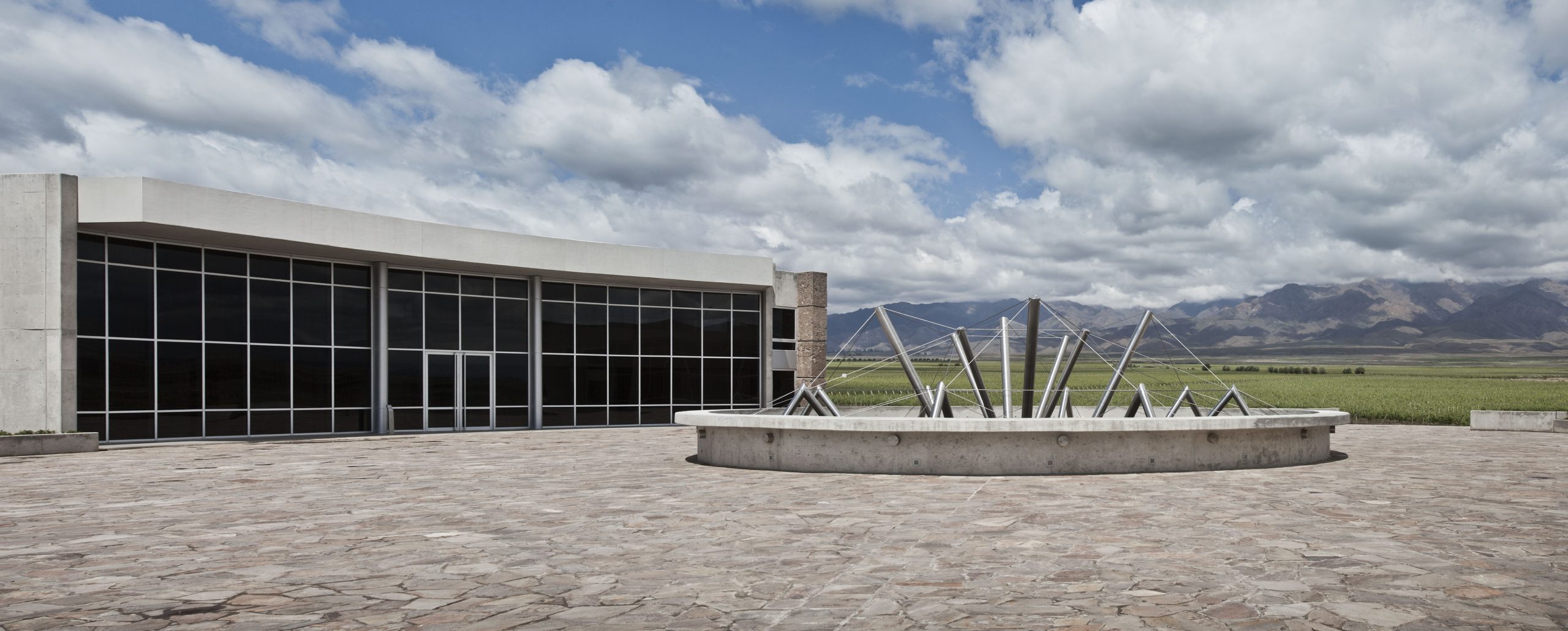
Diamandes Winery at Clos de los Siete, Vistaflores, Tunuyán.
“Thinking about the experiences of the architectural space was the key for design. The very conscious handling of spatial sequences, scale, light and shadow, materials and stimuli opened the way for us to innovate and seduce, without ever losing the industrial character that a winery essentially has,” she explains.
Since its construction, Salentein Winery stands as a landmark with its axis-like design inspired by the Southern Cross. The glass walls draw visitors’ eyes to the surrounding landscape, while a small path leads through the vineyard to the wine production building. This was the first winery constructed by the studio and marked Mendoza’s transformation into a premier wine region.
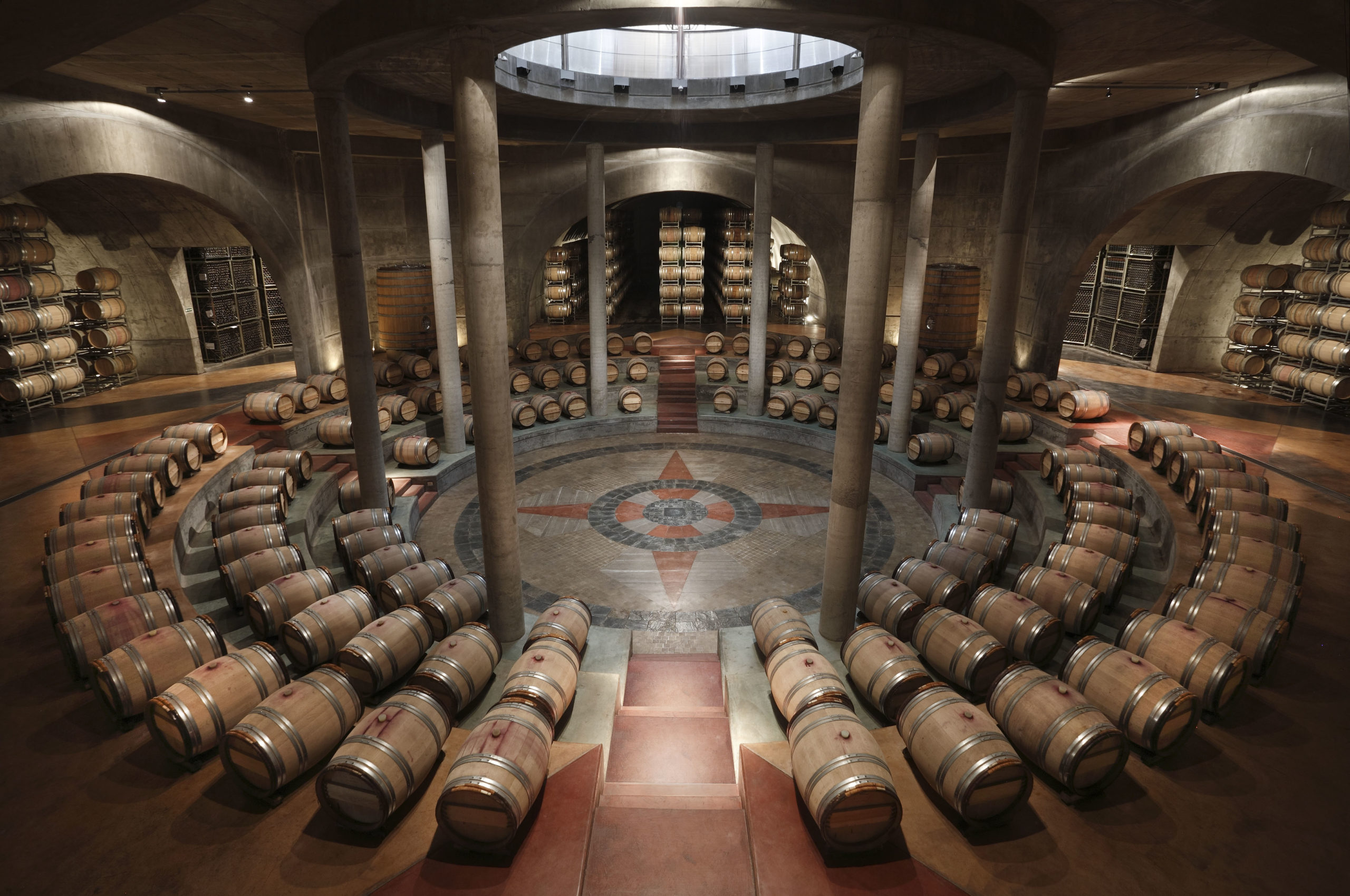
The cellar at Salentein Winery.
With the years, sustainability increased its leading role. Nowadays, the responsible use of water is essential in a desert like the one that characterizes Mendoza, but also the construction with local materials, the well use of lights and the conservation of energy. Currently, the aim is to boost development respecting nature.
One of the latest incorporations to the leading wineries in Uco Valley is Piedra Infinita (Infinite Stone). It belongs to the Zuccardi Wine Group and is an excellent example of this artistic, functional and sustainable creation. It was designed by the architect Fernando Raganato and is located in Paraje Altamira, San Carlos. The winery is built with local materials that blend in with the landscape: stones from the Estate, water and sand from the Tunuyán River. The walls have a curvature that mimic the Andes Mountains. The winery has plenty of light during the day, which makes it possible not to use artificial lighting. It has been selected as ‘World’s Best Vineyard’ for 3 years in a row and after that it was placed in the Hall of Fame.
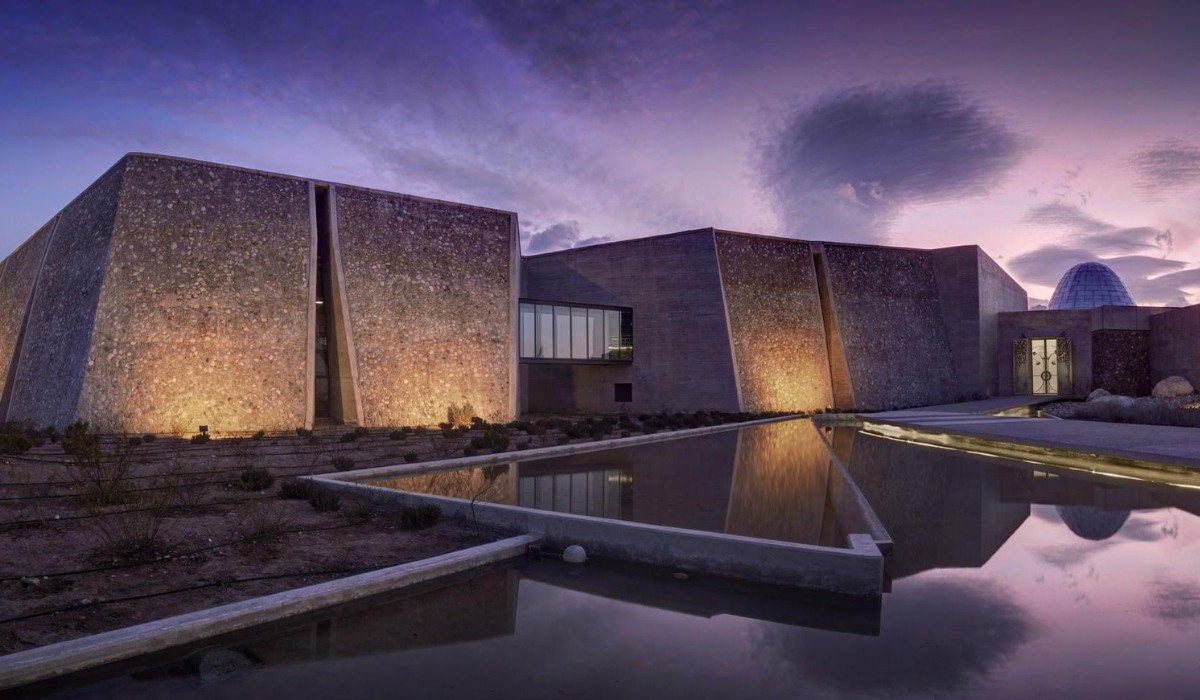
Piedra Infinita Winery in Paraje Altamira, San Carlos, Uco Valley.
Another excellent example of this type of concept is Super Uco in Los Chacayes, Tunuyán, at 1120 meters above sea level. It is a small winery with the seal of the Michelini brothers. Maximiliano Matheu is its architect, and he declared: “The project came about in a relaxed way, following the style of the owners. The project was developed on a two-hectare plot and consists of a winery, a restaurant, an orchard, pens for animals and some other facilities.” The building is arranged with an octagonal floor plan where four of its sides are oriented to the cardinal points. This, in addition to giving it a distinctive shape, offers views to all directions to appreciate the Andes on the West or look at the valley on the East. The most important space is the tasting area in the middle, which is also the center of the vineyard. This winery won the Best of Mendoza Wine Tourism Award in the Sustainable Practices category.
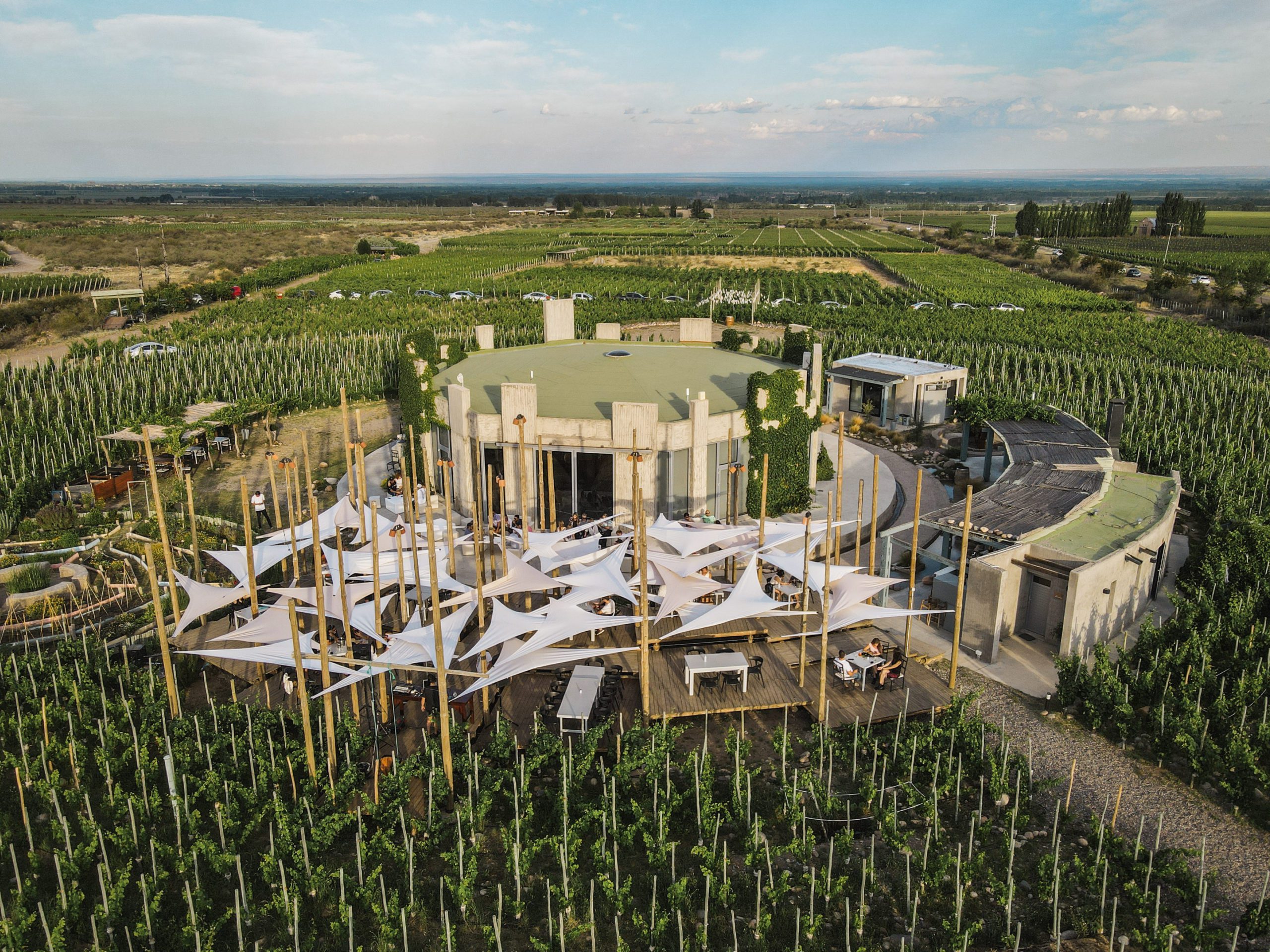
Super Uco at The Vines, Tunuyán.
The Art of Landscaping in Mendoza’s Wineries
The landscaping of the wineries in Mendoza is a testament to the harmonious blend of nature and human creativity, creating stunning environments that enhance the wine-tasting experience.
Integrating Nature and Architecture
The wineries in Mendoza are designed to complement the natural beauty of the region. Bodega Monteviejo is a prime example, where the vineyards are planted on terraced slopes that reach up to the roof of the winery. This design not only maximizes the use of space but also creates a dramatic visual effect, with shadows and light playing across the terraces.
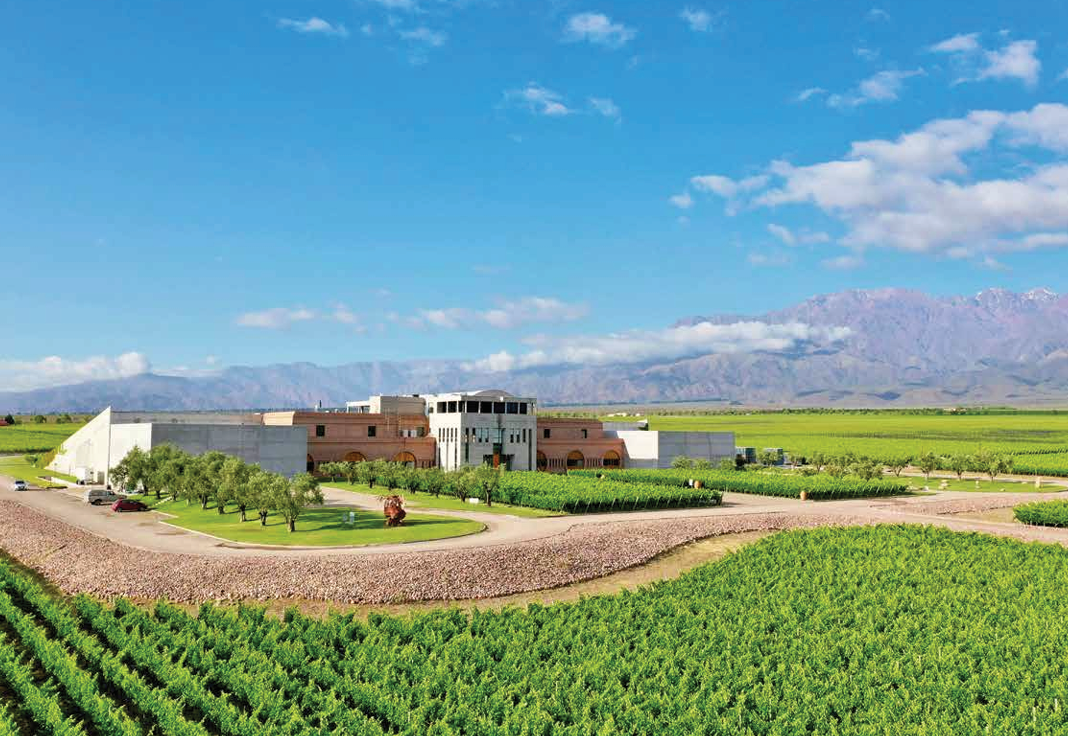
Monteviejo Winery at Clos de los Siete, Tunuyán.
Sustainable Practices
Many wineries in Mendoza incorporate sustainable practices into their landscaping. Salentein and Piedra Infinita Wineries are known for its commitment to sustainability, using native plants and water-efficient irrigation systems to maintain its vineyards. This approach not only preserves the local ecosystem but also enhances the aesthetic appeal of the winery.
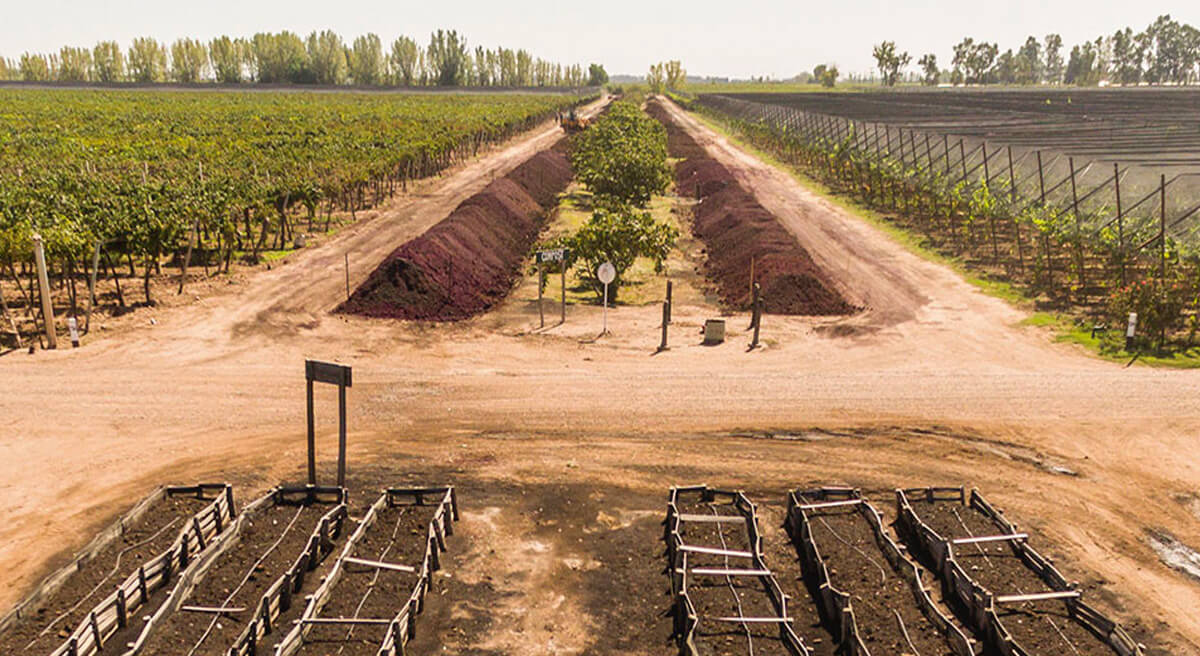
Sustainable Practices at Santa Julia Winery in San Roque, Maipú, Mendoza
Creating Unique Experiences
The landscaping of Mendoza’s wineries is designed to create unique and memorable experiences for visitors. Bodega Catena Zapata stands out with its pyramid-shaped structure inspired by Mayan architecture. The surrounding vineyards are meticulously maintained, providing a serene backdrop for wine tasting and tours.
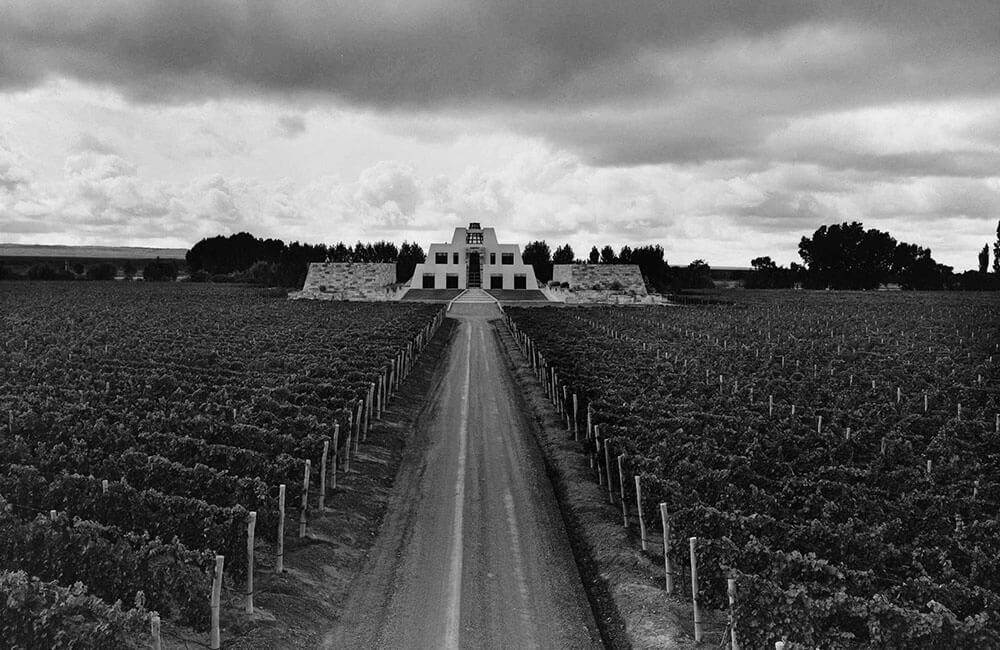
Catena Zapata Winery in Agrelo, Luján de Cuyo.
Bodega Norton offers a different experience with its lush gardens and panoramic views of the Andes. The winery’s landscaping includes walking paths and seating areas where visitors can relax and enjoy the stunning scenery.
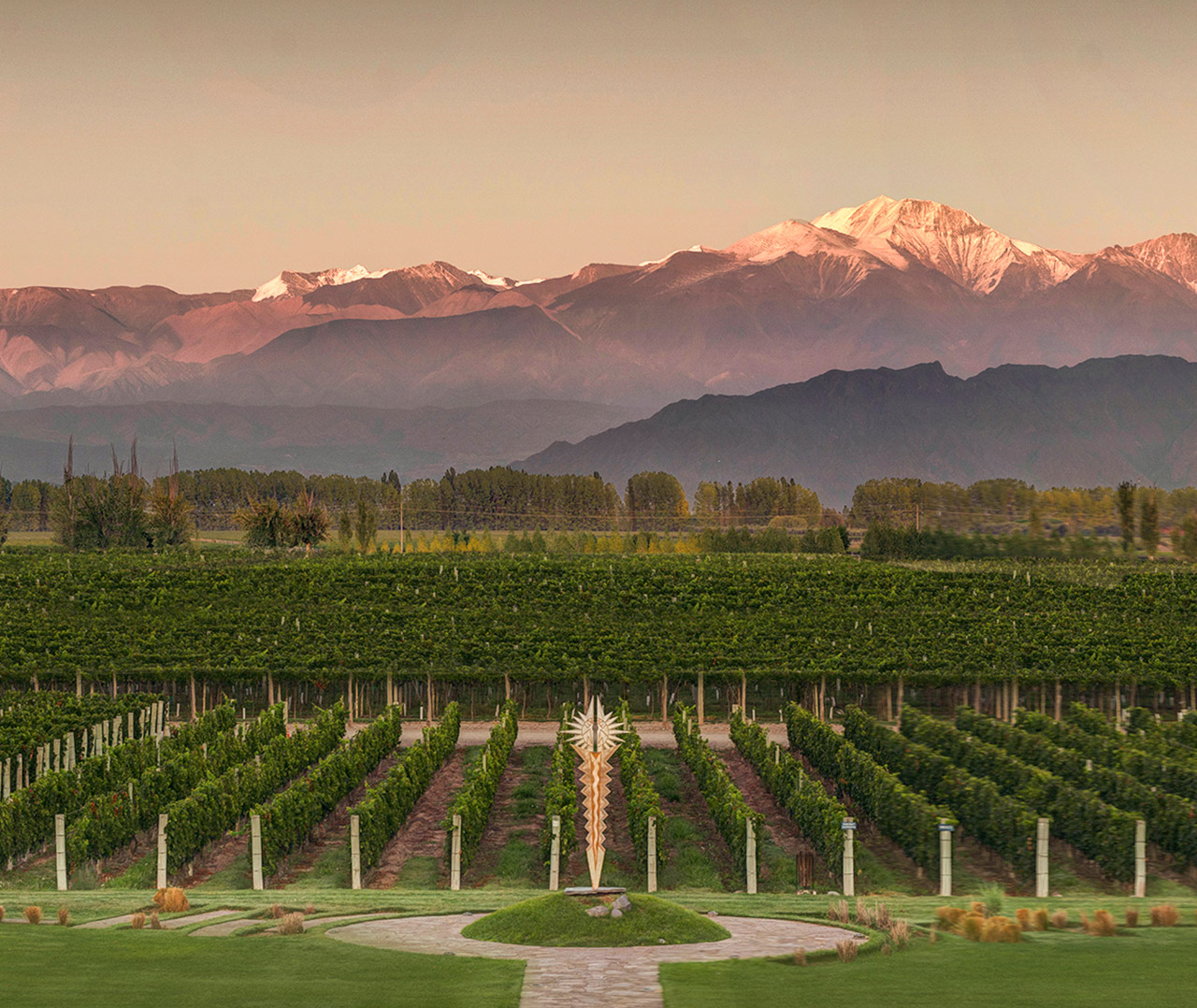
Gardens with a view at Norton Winery, Agrelo, Luján de Cuyo.
The landscaping of Mendoza’s wineries is a vital part of the region’s charm, enhancing the wine-tasting experience with breathtaking views and innovative designs. Whether you’re strolling through terraced vineyards, relaxing in lush gardens, or admiring the architectural marvels, Mendoza’s wineries offer a feast for the senses.
The examples of stunning architecture and landscaping multiply throughout the territory of Mendoza. We invite you to discover them and immerse yourself in the dream.
Text and Photo Credits: EMETUR (Tourism Board of Mendoza)